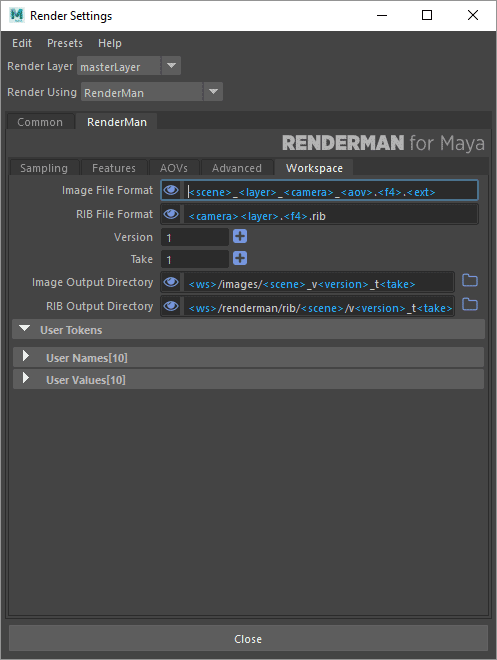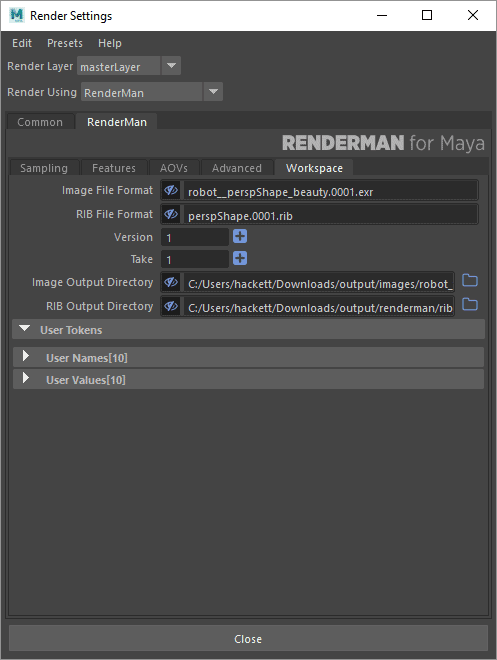Contents
The Workspace tab is primarily a viewer, displaying the settings and values for preferences and variables associated with your asset management policies.
Here you may use tokens to define the output naming and even automate them using your pipeline and User Names and Values. This is a convenient shorthand way to define naming conventions without typing things out as a long string and allowing the token to auto-resolve without user interaction based on project settings.
RenderMan for Maya can substitute a number of predefined tokens in string parameters. They can be used for animated texture sequences, referencing specific storage locations, etc.
| Token | Meaning |
|---|---|
| <scene> | Scene name |
| <layer> | Maya Render Layer name |
| <camera> | Render camera name |
| <aov> | AOV or LPE name |
| <aovdir> | This will write AOVs to named sub-directories |
| <f4> | Frame padding, 4 in this case, can be omitted for no padding or use lower numbers |
| <ext> | File type extension |
| <ws> | Maya's current workspace, the file path in your project |
| <version> | Inserts the version number specified above |
| <take> | Inserts the take number specified above |
| <date> | Current date |
| <assetlib> | Path to the standard RenderMan Asset Library |
| <file> | Scene file name |
| <frame> | Decimal frame number |
| <jobid> | Unique job identifier |
| <shape> | Short shape name (all instances have the same shape name) |
| <shapepath> | Long shape name (all instances have unique shapepath names) |
| <time> | Current time |
| <udim> | UDIM identifier (only substituted at render time) |
| <imagedir> | This contains the full image output directory |
| _MAPID_ | Generic texture atlas identifier (only substituted at render time) |
Environment Variables
Environment variables must start with the $ sign and only use capitals, numbers and "_" characters:
$RMANTREE/bin/txmake: returns the path to the txmake utility.- Curly braces can also be used for composition:
${SHOW}_assets/<shape.assetName>/<shape.assetVersion>/tex/<shape>_diff.<udim>.tex
Retrieving attribute values
RfM does not support TCL expression anymore but allows for attribute evaluation:
<shape.time>returns the value of the 'time' attribute on the shape node ('shape' as opposed to the 'transform' node).- It is also possible to format numerical attribute values by specifying a formatting string:
<shape.time:%04d>: if time's value is12.2, this will return 0012.- This is using python's standard format specifiers.
Since tokens are shorthand, you may wish to see what they resolve to before rendering. You'll notice the eye icon. Selecting this will show you the resulting strings of your token choices.


